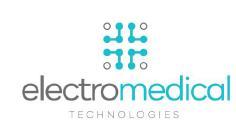UNITED STATES
SECURITIES AND EXCHANGE COMMISSION
Washington, D.C. 20549
FORM
(Mark One)
QUARTERLY REPORT PURSUANT TO SECTION 13 OR 15(d) OF THE SECURITIES EXCHANGE ACT OF 1934 |
For the quarterly period ended
TRANSITION REPORT PURSUANT TO SECTION 13 OR 15(d) OF THE SECURITIES EXCHANGE ACT OF 1934 |
For the transition period from ______ to ______.
Commission File Number

(Exact name of registrant as specified in its charter)
| 5047 |
|
| |
(Address of principal executive offices) | (Zip Code) |
(Registrant’s telephone number, including area code)
Indicate by check mark whether the registrant (1) has filed all reports required to be filed by Section 13 or 15(d) of the Securities Exchange Act of 1934 during the preceding 12 months (or for such shorter period that the registrant was required to file such reports), and (2) has been subject to such filing requirements for the past 90 days.
Indicate by check mark whether the registrant has submitted electronically and posted on its corporate Web site, if any, every Interactive Data File required to be submitted and posted pursuant to Rule 405 of Regulation ST (§232.405 of this chapter) during the preceding 12 months (or for such shorter period that the registrant was required to submit and post such files). Yes ☐
Indicate by check mark whether the registrant is a large accelerated filer, an accelerated filer, a non-accelerated filer, a smaller reporting company, or an emerging growth company. See definitions of “large accelerated filer,” “accelerated filer,” “smaller reporting company,” and “emerging growth company” in Rule 12b-2 of the Exchange Act.
Large accelerated filer | ☐ | Accelerated filer | ☐ |
☒ | Smaller reporting company | ||
Emerging growth company |
|
|
Indicate by check mark whether the registrant is an emerging growth company as defined in Rule 405 of the Securities Act of 1933 (17 CFR §230.405) or Rule 12b-2 of the Securities Exchange Act of 1934 (17 CFR §240.12b-2). ☒
If an emerging growth company, indicate by check mark if the registrant has elected not to use the extended transition period for complying with any new or revised financial accounting standards provided pursuant to Section 13(a) of the Exchange Act.
Indicate by check mark whether the registrant is a shell company (as defined in Rule 12b-2 of the Exchange Act). Yes
On June 30, 2021, and August 12, 2021,
EXPLANATORY NOTE
This Amendment No. 1 to the Quarterly Report on Form 10-Q (this “Amended 10-Q”) of Electromedical Technologies, Inc. (the “Company”) amends the Company’s Quarterly Report on Form 10-Q for the three and six months ended June 30, 2021 (the “Original 10-Q”), which was filed with the Securities and Exchange Commission (the “SEC”) on August 13, 2021. The Company is filing this Amended 10-Q to update certain information related to the number of shares to be issued in conjunction with the reset feature on one of the Company’s outstanding warrants. It has been determined that the reset feature for the warrant does not require an increase in underlying shares outstanding resulting in a decrease in total underlying shares from 57,695,151 to 20,611,570. The Company’s balance sheet and statements of stockholders’ equity for the six months ended June 30, 2021 have been adjusted to reflect the change as well as the applicable accompanying notes.
As required by Rule 12b-15 of the Securities Exchange Act of 1934, as amended, new certifications by the Company’s principal executive officer and principal financial officer are included in this Amended 10-Q.
Except as described above, no other amendments have been made to the Original 10-Q. This Amended 10-Q does not reflect events that occurred after the date of the Original 10-Q, and except as described above, the Company has not modified or updated disclosures contained in the Original 10-Q to reflect any events that occurred after the date of the Original 10-Q.